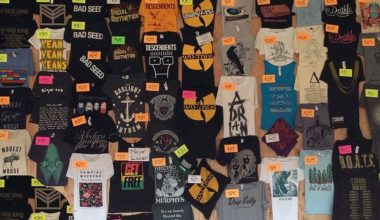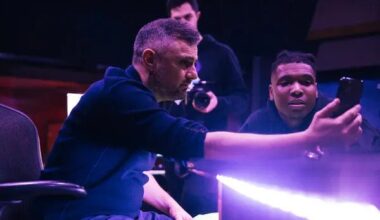
“What is Sync Licensing?” you may ask. It’s a question that echoes in the minds of many artists, producers, and music enthusiasts alike. It’s a question that opens the door to a world where music and visual media dance in a harmonious ballet, creating a spectacle that’s as captivating as it is powerful.
Picture this: you’re engrossed in a gripping scene of your favorite TV show. The dialogue is riveting, the acting is top-notch, and the cinematography is breathtaking. But there’s one element that ties it all together, one element that elevates the scene from great to unforgettable – the music.
That perfect song that captures the mood of the scene so flawlessly, it’s as if it was composed solely for this moment. The way it swells with the drama, dips with the suspense, and soars with the triumph. It’s a symphony of sight and sound, a melody of emotion and storytelling. This, my friends, is the magic of sync licensing.
But the magic doesn’t stop there. Sync licensing is a billion-dollar industry that can catapult an artist’s career faster than a supersonic jet. It’s the placement of your song in a TV show, movie, video game, or ad campaign. It’s the art of matching music with visual media to create a harmonious blend of sight and sound.
And it’s a journey that can take you from the recording studio to the silver screen. It’s a journey that’s as thrilling as it is rewarding, as challenging as it is fulfilling. So, buckle up, because we’re about to dive headfirst into the captivating world of sync licensing.
The Two Sides of Sync Licensing: Master and Publishing
When we delve into the question, “What is Sync Licensing?”, we encounter a world that is split into two halves – the Master and the Publishing. These two halves are like the two sides of a coin, each distinct yet inseparable, each playing a crucial role in the grand scheme of sync licensing.
The Master is the sound recording – the actual music you hear. It’s the culmination of an artist’s creativity, the tangible result of countless hours spent in the recording studio. It’s the beats, the vocals, the harmonies, the very fabric of the song. It’s like the physical coin itself, tangible and real.
The Publishing, on the other hand, is the underlying composition – the melody, the lyrics, the very essence of the song. It’s the creative spark that gave birth to the song, the raw material that was shaped and molded into the final sound recording. It’s like the value of the coin, intangible yet intrinsic.
Both the Master and the Publishing need to be licensed for a sync to happen. It’s like exchanging a coin – you need both the physical coin and the value it represents for the transaction to be valid.
But who owns these rights? If you’re with a label, they usually own the Master. If you’re signed to a publisher, they have the rights to grant permission on your behalf. But if you’re an independent artist, you’ll need to negotiate yourself. And if there are co-writers or composers involved, things can get a bit complicated.
It’s like a coin with multiple owners – you need the consent of all parties involved to use it. So, it’s always a good idea to establish your master and publishing splits upfront, to ensure a smooth and hassle-free sync licensing process.
In the end, understanding the two sides of sync licensing is crucial to navigating the world of sync licensing. It’s about knowing your rights, understanding the process, and making informed decisions. Because in the world of sync licensing, knowledge is power.
The Role of the Music Supervisor: The Maestro of Sync Licensing
In the grand orchestra of sync licensing, the music supervisor is the maestro, the conductor who brings everything together in perfect harmony. They’re the ones with the eye and the ear to find the perfect song for a scene, the ones who bridge the gap between the visual and the auditory, the ones who turn a good scene into an unforgettable one.
A music supervisor is like a chef in a gourmet kitchen. They consider the emotional core of the scene, the setting, the characters, just like a chef considers the ingredients, the occasion, and the guests. Then they search for a song that fits the vibe, just like a chef selects the perfect recipe.
But how do they find the right song? They look everywhere. They’re all over social networks, asking friends, checking out playlists. It’s like a chef scouring the market for the freshest ingredients, tasting, smelling, touching, until they find the perfect ones.
And when they find the right song, they have to figure out if they can actually license it. It’s like a chef checking if the ingredients are available and within budget. They need to ensure that the rights are clear, that the song fits within the budget, and that it can be licensed in time for the production.
But the role of the music supervisor doesn’t end there. They also negotiate the sync license, coordinate with the rights owners, and ensure that everything is in order for the sync to happen. It’s like a chef preparing the meal, cooking it to perfection, and serving it at the right time.
In the end, the music supervisor is the unsung hero of sync licensing. They’re the ones who ensure that the music enhances the visual media, that it resonates with the audience, and that it elevates the scene to new heights. They’re the ones who answer the question, “What is Sync Licensing?” with their actions, day in and day out.
Maximizing Your Chances of Getting a Sync: The Art of Being Heard
So, you’ve got your music, you understand “What is Sync Licensing?”, and you’re ready to dive into the world of sync licensing. But how do you get your music in front of a music supervisor? How do you maximize your chances of getting a sync? Well, it’s a bit like trying to get noticed in a crowded room. You need to stand out, you need to be persistent, and you need to be at the right place at the right time.
First and foremost, get your music out there. It’s like wearing a bright, flashy outfit in a crowded room. It catches people’s attention, it makes you stand out. Upload your music to platforms where music supervisors are likely to look, such as the top sync licensing music libraries. Attend industry events, network with people in the industry, and make sure your music is heard.
Next, work with sync agents. They’re like your wingmen in the crowded room. They know the industry, they have the contacts, and they can help get your music in front of the right people. They can help you navigate the complexities of sync licensing, negotiate deals, and maximize your chances of getting a sync.
Be persistent, but not annoying. It’s like striking up a conversation in the crowded room. You want to be engaging, interesting, but not overbearing. Follow up with music supervisors, but don’t spam them. Show them that you’re serious about your music, but respect their time and space.
Make sure you’re contactable. It’s like wearing a name tag in the crowded room. It makes it easy for people to find you, to reach out to you. Put your email address up where the music is. Make it easy for music supervisors to contact you if they’re interested in your music.
And most importantly, make great music. Because at the end of the day, the right match is better than just any match. It’s like having a great personality in the crowded room. It’s what makes people want to get to know you, to spend time with you. So, focus on your craft, keep improving, and make music that resonates with people.
In the end, maximizing your chances of getting a sync is about being proactive, being persistent, and being patient. It’s about putting yourself out there, making connections, and never giving up. Because in the world of sync licensing, every no is one step closer to a yes.
Conclusion: What is Sync Licensing?
So, what is sync licensing? It’s more than just a way to make money. It’s a way to connect with audiences on a deeper level. It’s a way to tell stories through music. It’s a way to make your mark on the world of visual media.
Sync licensing is like a dance, a ballet of sight and sound. It’s the rhythm of the visuals, the melody of the music, the harmony of the two coming together to create something truly magical. It’s a dance that can take you from the recording studio to the silver screen, from the comfort of your home to the hearts of millions.
But like any dance, sync licensing requires practice, patience, and persistence. It requires you to understand the steps, to learn the moves, to feel the rhythm. It requires you to put yourself out there, to take risks, to face rejection. But most importantly, it requires you to never give up, to keep dancing, even when the music stops.
So, put yourself out there. Get in people’s ears. Make your music heard. And never stop hustling for your next opportunity. Because in the world of sync licensing, the only limit is your imagination.
Remember, every sync is a chance to connect, to resonate, to inspire. It’s a chance to tell a story, to evoke an emotion, to create a moment. So, seize every opportunity, make every sync count, and let your music dance with the visuals in the grand ballet of sync licensing.
And as you embark on this journey, remember to enjoy the dance, to feel the rhythm, to lose yourself in the melody. Because at the end of the day, sync licensing is not just about the destination, it’s about the journey. It’s about the joy of creating, the thrill of connecting, the magic of storytelling. So, dance on, and let your music tell its story.





